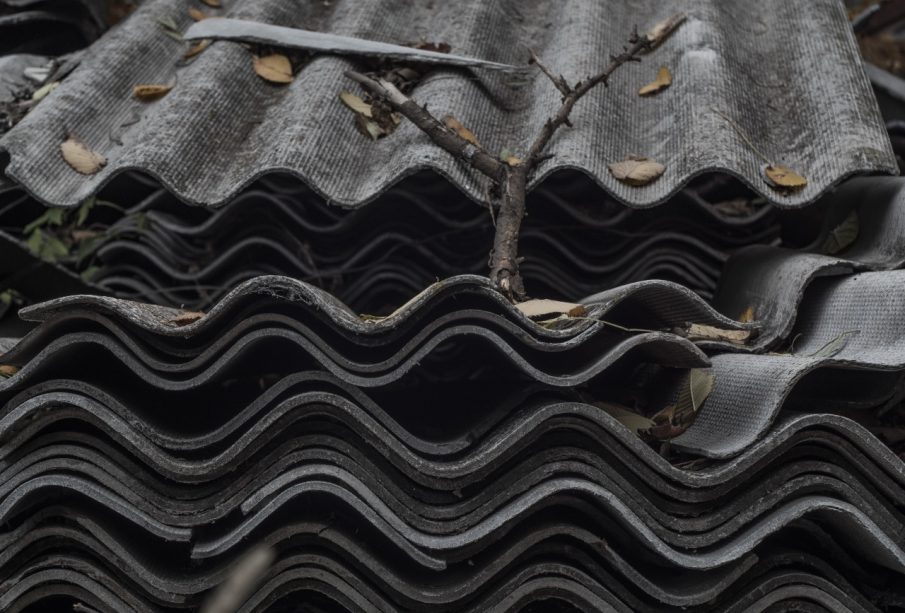High-Risk Military Occupations: Which Jobs Had the Most Asbestos Exposure?

slate stacked on top of each other
Not all military service members faced equal asbestos exposure risks. While the U.S. military used asbestos extensively across all branches from the 1930s through the 1980s, certain occupational specialties encountered dramatically higher concentrations of asbestos fibers due to the nature of their daily duties. Understanding which military jobs carried the greatest risks is essential for veterans who need to establish service-connected exposure for VA disability claims, for those monitoring their health for early warning signs of mesothelioma, and for family members seeking to understand their loved one’s diagnosis. This comprehensive guide examines the military occupations that placed service members in the most dangerous proximity to asbestos and explains why these jobs resulted in disproportionately high mesothelioma rates decades later.
Navy Occupations: The Highest Risk Branch
The Navy experienced the highest mesothelioma rates among all military branches, primarily because naval vessels were constructed almost entirely with asbestos materials. Navy ratings (job specialties) involving shipboard mechanical systems faced extraordinary exposure levels.
Machinist’s Mates (MM)
Machinist’s mates operated and maintained ships’ propulsion systems, auxiliary machinery, and steam plants, all heavily insulated with asbestos. These sailors worked daily in engine rooms surrounded by asbestos-wrapped pipes, pumps, turbines, and condensers. Routine maintenance required removing damaged insulation, cutting gaskets, and replacing worn parts, activities that released massive quantities of asbestos fibers into already poorly ventilated spaces. Many machinist’s mates spent entire careers in these asbestos-saturated environments, accumulating exposures that virtually guaranteed disease development decades later.
Boiler Technicians (BT)
Boiler technicians operated and maintained propulsion boilers, systems operating at extreme temperatures requiring maximum asbestos insulation. These sailors regularly worked inside boilers during maintenance periods, scraping away old asbestos insulation and applying new materials in confined spaces filled with asbestos dust. The intense heat of operational boilers caused asbestos insulation to deteriorate rapidly, creating constant exposure even during routine operations.
Hull Maintenance Technicians (HT) and Damage Controlmen (DC)
Hull technicians and damage controlmen maintained ships’ structural integrity, ventilation systems, plumbing, and damage control equipment. Their work involved cutting, welding, and fitting pipes wrapped in asbestos insulation, installing asbestos gaskets, and working with asbestos-containing firefighting equipment. During ship repairs and overhauls, these ratings performed extensive asbestos removal and replacement, often without protective equipment because the dangers weren’t understood or acknowledged.
Pipefitters and Shipfitters
Shipboard pipefitters installed, maintained, and repaired the extensive piping systems throughout naval vessels. Resources focused on veterans who worked in high-risk Navy occupations document how virtually every inch of shipboard piping was wrapped in asbestos insulation. Pipefitters cut through this insulation daily, breathed asbestos dust while fitting pipes in tight spaces, and worked in compartments where disturbed asbestos fibers had nowhere to dissipate.
Electrician’s Mates (EM)
While electrician’s mates might seem less exposed than mechanical ratings, they worked extensively with electrical cables insulated with asbestos, electrical panel boxes containing asbestos backing boards, and junction boxes sealed with asbestos gaskets. Running new cables or troubleshooting electrical systems required working in spaces lined with asbestos insulation, and cable maintenance released asbestos fibers from deteriorating insulation.
Aviation Mechanics and Aviation Technicians
Navy aviation ratings faced exposure from aircraft components including brake pads, engine gaskets, heat shields, and electrical systems. Aircraft carriers’ below-deck hangar bays and repair shops contained asbestos fireproofing throughout, and mechanics working in these spaces inhaled fibers both from aircraft components and from the surrounding environment.
Army Occupations: Construction and Vehicle Maintenance
Army veterans faced asbestos exposure primarily through base construction, building maintenance, and vehicle repair operations.
Construction Engineers and Combat Engineers
Army engineers constructed bases, roads, airfields, and facilities using asbestos-containing building materials. These included asbestos cement, insulation, roofing materials, floor tiles, and pipe wrapping. Construction work involved cutting, drilling, and installing these products, creating airborne fiber clouds. Combat engineers performing demolition work disturbed asbestos in existing structures, causing acute high-level exposures.
Vehicle and Tank Mechanics
Army mechanics maintained jeeps, trucks, tanks, and armored vehicles equipped with asbestos brake linings, clutch facings, and engine gaskets. Brake repair involved blowing out brake dust, largely composed of asbestos fibers, using compressed air, a practice that created hazardous exposure. Information available through resources documenting military occupational hazards indicates that vehicle mechanics across all branches faced similar risks, with brake work representing one of the most dangerous routine maintenance tasks.
Plumbers and Pipefitters
Army plumbers and pipefitters installed and maintained base water, heating, and sewage systems using asbestos pipe insulation and asbestos cement pipes. Work in mechanical rooms and below-ground utility spaces exposed these specialists to concentrated asbestos levels, particularly during repair operations requiring removal of old insulation.
Welders
Military welders worked with metals joined using asbestos gaskets and often performed tasks in close proximity to asbestos-insulated pipes and equipment. Welding heat caused nearby asbestos insulation to degrade and release fibers. Welders also used asbestos curtains, gloves, and protective aprons, maintaining constant contact with asbestos materials.
Air Force Occupations: Aircraft and Building Maintenance
Air Force personnel encountered asbestos in aircraft, buildings, and ground support equipment.
Aircraft Mechanics and Crew Chiefs
Air Force aircraft mechanics serviced planes containing asbestos brake pads, engine gaskets, heat shields, electrical insulation, and fireproofing. Routine maintenance, particularly brake service and engine repair, released asbestos fibers. Mechanics working in hangars lined with asbestos fireproofing faced additional environmental exposure beyond direct contact with aircraft components.
Building Maintenance Workers
Air Force bases utilized extensive asbestos in barracks, hangars, administrative buildings, and operational facilities. Maintenance personnel repairing heating systems, renovating buildings, or replacing roofing encountered asbestos insulation, tiles, ceiling panels, and roofing materials. Demolition and renovation work posed extreme risks when asbestos materials were disturbed without proper containment procedures.
Firefighters
Military firefighters faced unique asbestos exposure from multiple sources. Their protective equipment, including suits, gloves, and blankets, contained asbestos for fire resistance. Fire stations themselves often contained asbestos in building materials. Most significantly, firefighters responding to structural fires encountered smoke and debris containing asbestos fibers released from burning buildings, creating intense exposures during emergency operations.
Marine Corps Occupations: Combined Exposure Sources
Marines faced asbestos exposure from multiple sources: shipboard duty, amphibious vehicles, aircraft, base facilities, and combat operations.
Amphibious Vehicle Mechanics
Marines maintaining amphibious assault vehicles (AAVs) worked with asbestos brake systems, engine components, and heat shielding. The dual land-sea nature of these vehicles required extensive asbestos fireproofing, and mechanics performed maintenance in confined vehicle compartments where disturbed fibers accumulated.
Combat Engineers and Demolition Specialists
Marine combat engineers conducting demolition operations in training and combat environments disturbed asbestos in structures, particularly in overseas operations where building materials often contained high asbestos concentrations. Resources providing legal and medical information for veterans note that Marines serving in Vietnam, Korea, and later conflicts encountered asbestos in enemy structures, allied bases, and captured facilities.
Aviation Mechanics
Marine aviation mechanics faced identical risks to their Air Force and Navy counterparts, servicing aircraft with asbestos components and working in asbestos-lined hangars and maintenance facilities.
Why Certain Military Jobs Were More Dangerous
Asbestos exposure risk depended on several factors: frequency of contact with asbestos materials, duration of exposure, concentration of airborne fibers, and whether work involved disturbing or damaging asbestos products. Jobs requiring maintenance, repair, or installation of asbestos-containing equipment posed greater risks than positions with passive exposure. Work in confined spaces with poor ventilation dramatically increased fiber concentrations. According to comprehensive veteran asbestos exposure information, occupational specialty often proved the strongest predictor of whether a veteran would eventually develop mesothelioma.
Coast Guard Occupations: Similar to Navy Exposures
Coast Guard ratings paralleled Navy occupations, with similar exposure patterns aboard cutters, in shipyards, and at coastal stations.
Machinery Technicians and Damage Controlmen
Coast Guard machinery technicians maintained propulsion plants and auxiliary systems using identical asbestos-insulated equipment found on Navy vessels. Damage controlmen managed firefighting and damage control equipment containing asbestos throughout Coast Guard cutters.
Marine Science Technicians
Unique to the Coast Guard, marine science technicians maintained navigation, communication, and environmental monitoring equipment, often working in spaces lined with asbestos insulation or involving asbestos-containing electronics.
Supporting Occupations Often Overlooked
Beyond primary high-risk ratings, numerous supporting occupations faced significant exposure:
Storekeepers and Supply Personnel: Handling, inventorying, and distributing asbestos-containing supplies and equipment.
Food Service Workers: Working in galleys and mess halls with asbestos ceiling tiles, deck materials, and pipe insulation.
Administrative Personnel: Spending extended periods in berthing areas and offices containing asbestos materials, particularly aboard ships.
Medical Personnel: Working in sick bays and medical facilities aboard ships and at bases constructed with asbestos.
Cumulative Exposure and Multiple Occupational Specialties
Many veterans served in multiple occupations during their military careers, accumulating exposures from different sources. A sailor might have started as a seaman apprentice performing general shipboard labor before specializing as a machinist’s mate, experiencing exposure throughout this progression. Veterans who cross-trained or changed ratings added to their total asbestos burden with each new assignment.
Implications for Veterans Today
Understanding your military occupational specialty’s asbestos risks helps in several important ways. Detailed guidance available through veteran health and benefits resources emphasizes that veterans in high-risk occupations should:
Monitor Health Carefully: Be vigilant for mesothelioma symptoms and seek regular screening, especially if you served in high-risk ratings.
Document Exposure History: Record your military occupational specialties, duty stations, and specific tasks for use in VA disability claims and potential legal actions.
File VA Claims Promptly: High-risk occupation history strengthens service-connection arguments for VA disability benefits.
Consider Legal Options: Veterans in documented high-risk jobs often have strong cases for legal compensation from asbestos manufacturers.
The concentration of mesothelioma cases among specific military occupations isn’t coincidental, it reflects the systematic exposure of certain service members to deadly asbestos levels. Recognition of these patterns helps veterans understand their risks, access entitled benefits, and pursue appropriate medical monitoring and legal compensation for asbestos diseases developed through military service.
















